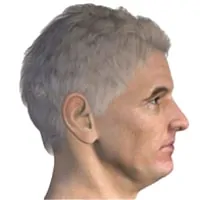What Is A Dental Implant?
Dental implant is designed to replace the missing tooth root and hold the artificial tooth in place. It is a screw made of Titanium screw that replaces the root of a tooth when it fails, and similar to a tooth root it is placed into the jawbone.
- Natural Tooth
- Dental Implant
- Tooth Crown
How Safe Are Dental Implants?
Dental implants are a safe, well-established treatment. It is probably true to say that implants, much like natural teeth, will last for as long as you care for them.
How Long Do Dental Implants Last?
You could get all these problems with natural teeth. If your implants are well looked after, and if the bone they are fitted to is strong and healthy, you can expect them to last for many years. However, just as with other surgical implants (such as a hip replacement) there is no lifetime guarantee
Materials Used In Dental Impants

Pure Titanium Dental Implant

Titanium Zirconium Dental Implant

Ceramic Dental Implant
Why Are Dental Implants Needed?


Types of Tooth / Dental Implants
Single Tooth Implant Replacement
Full Jaw Rehabilitation on 4 or 6 implants
Conventional 3-Unit Bridge Treatment
Multiple Tooth Implant Replacement
Removable Dentures Retained on Implants
Retentive Anchors (Locators)
Procedure To Get Tooth/Dental Implants
- Dental Implant Consultation
- Cutting The Gum To Place Your Dental Implant
- Fitting The Crown To Your Dental Implant
The first step is a consultation appointment. The surgeon will perform an examination of your mouth and will measure the amount and quality of bone in the area, assess your oral hygiene, take x-rays, and will give you options on which sort of implant you would like.
At the first treatment appointment, a cut is made in the gum and the screw is placed into your natural bone. Your gum is then sutured, covering the screw.
After your implants have been placed, the bone in your jaw needs to grow around them and fuse to them. This process can take a few months. Sometimes the implants may be stable enough when they are placed for the false teeth to be fitted sooner than this.
If you are having more than one tooth replaced, you may have a temporary denture in the meantime. If you already have dentures, you can keep wearing them while your implants are healing. They may require altering to fit properly after the surgery, and a ‘healing cap’ will usually be placed onto the implant site to protect it.
Once the crown is fitted, you can treat the implant like a normal tooth. This includes brushing and cleaning (flossing) between the implant and the adjacent teeth.
It is also possible to use implants to support more than one tooth. I is possible to place 2-4 implants to hold a full set of dentures. By fitting the dentures to implants you will get more stability and it can help improve confidence knowing that the dentures cannot move. Your dentist will be able to advise you on the most appropriate treatment for your needs
